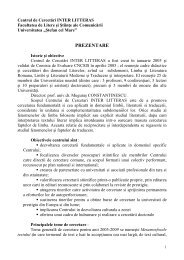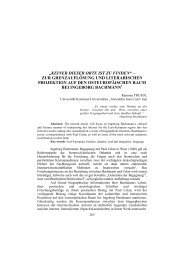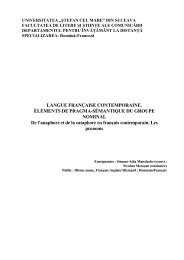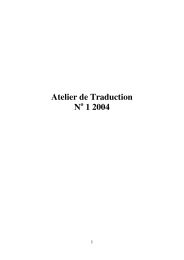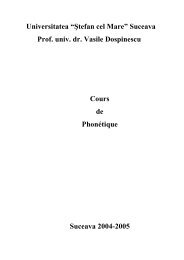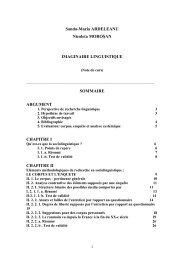Le discours de la francophonie
Le discours de la francophonie
Le discours de la francophonie
Create successful ePaper yourself
Turn your PDF publications into a flip-book with our unique Google optimized e-Paper software.
Oana Coşman – Investigating specialised <strong>discours</strong>e…findings indicate that politeness strategies are <strong>de</strong>ployed to preparethe ground for the main goal of the letter, to redress the potentiallyface-threatening act of requesting something from the clientand to close the letter. While both positive and negative politenessstrategies are frequent in the early stages of the letter to assertcommonality and togetherness, negative politeness strategies arepredominant once negotiation has commenced, with the purposeof redressing face-threat. Furthermore, she suggests that politenessresults not only from the use of individual politenessstrategies at the sentence level, but rather from a number ofillocutionary acts 'intricately wound together' in the text. Pilegaard(1997) notes that “in written texts the linguistic expressionsof politeness are not only the primary vehicles of politeness, theyare the only ones”. (Pilegaard, 1997:240).To sum up, the studies discussed above suggest that in comparisonto native speakers, non-native speakers of English oftenpresent some differences in the way requests and politeness arerealized in business contexts. Thus, it seems that when writingEnglish business texts, traces of the writer’s mother tongue willlikely remain in the text as is pointed out by Connor (1996: 135–143). 10 ConclusionThis article has examined business <strong>discours</strong>e as specialised<strong>discours</strong>e. We have reviewed one essential component of linguisticcompetence, politeness, using Brown and <strong>Le</strong>vinson's(1987) mo<strong>de</strong>l of politeness strategies because of its interactiona<strong>la</strong>pproach to the issue of politeness. The article has also ma<strong>de</strong>reference to the linguistic realization of positive and negative politenessstrategies in business correspon<strong>de</strong>nce. The aim was togain a greater un<strong>de</strong>rstanding of the ways in which politenessaffects and has bearing on the linguistic and rhetoric forms withinthe business <strong>discours</strong>e.10 U. Connor (1996), Contrastive Rhetoric: Cross-cultural Aspects of SecondLanguage Writing, Cambridge University Press, UK.60



